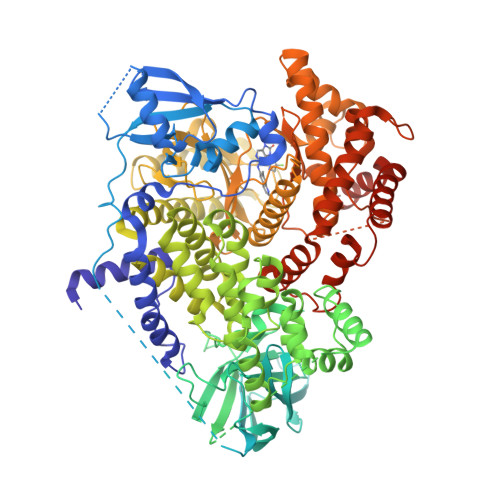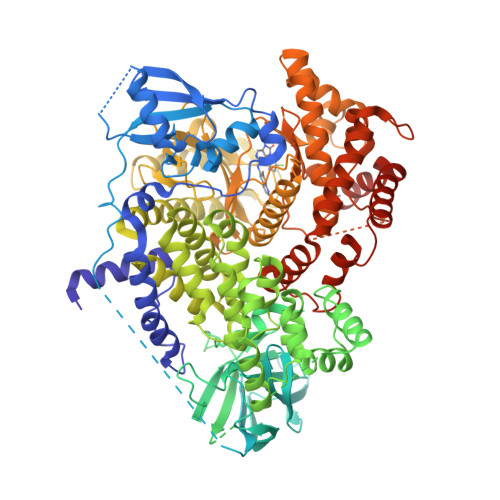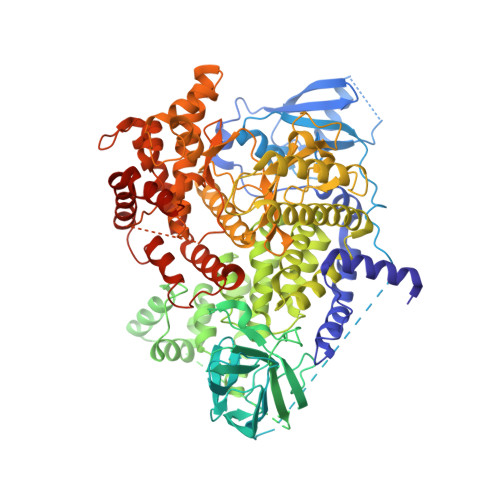Optimization of hERG and Pharmacokinetic Properties for Basic Dihydro-8 H -purin-8-one Inhibitors of DNA-PK.
Goldberg, F.W., Ting, A.K.T., Beattie, D., Lamont, G.M., Fallan, C., Finlay, M.R.V., Williamson, B., Schimpl, M., Harmer, A.R., Adeyemi, O.B., Nordell, P., Cronin, A.S., Vazquez-Chantada, M., Barratt, D., Ramos-Montoya, A., Cadogan, E.B., Davies, B.R.(2022) ACS Med Chem Lett 13: 1295-1301
- PubMed: 35978693
- DOI: https://doi.org/10.1021/acsmedchemlett.2c00172
- Primary Citation of Related Structures:
7Z61 - PubMed Abstract:
The DNA-PK complex is activated by double-strand DNA breaks and regulates the non-homologous end-joining repair pathway; thus, targeting DNA-PK by inhibiting the DNA-PK catalytic subunit (DNA-PKcs) is potentially a useful therapeutic approach for oncology. A previously reported series of neutral DNA-PKcs inhibitors were modified to incorporate a basic group, with the rationale that increasing the volume of distribution while maintaining good metabolic stability should increase the half-life. However, adding a basic group introduced hERG activity, and basic compounds with modest hERG activity (IC 50 = 10-15 μM) prolonged QTc (time from the start of the Q wave to the end of the T wave, corrected by heart rate) in an anaesthetized guinea pig cardiovascular model. Further optimization was necessary, including modulation of p K a , to identify compound 18 , which combines low hERG activity (IC 50 = 75 μM) with excellent kinome selectivity and favorable pharmacokinetic properties.
Organizational Affiliation:
Oncology R&D, AstraZeneca, Cambridge CB2 0AA, U.K.

















